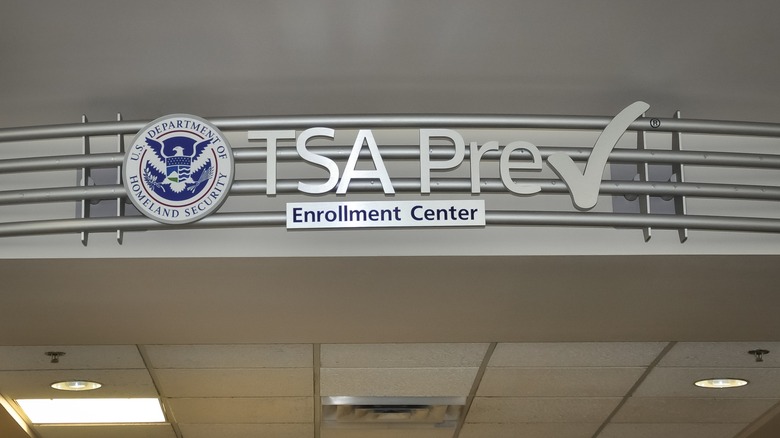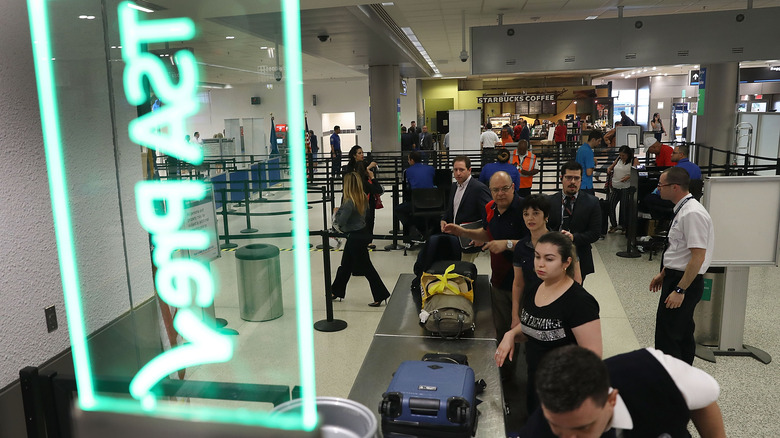The Unexpected Benefit TSA Never Guarantees Even If You Have PreCheck
If you've flown at any point in the last few years, you're probably familiar with TSA PreCheck. The service offers expedited screenings to qualified U.S. travelers, making the process of getting through airport security significantly less painful. According to TSA, about 99% of PreCheck passengers wait in line less than 10 minutes, and once they're at the front of the queue, they don't have to worry about removing their jackets and shoes or taking their laptops and liquids out of their bags.
Even though expedited screenings are the point of applying for TSA PreCheck, they aren't a guaranteed perk — even if you've paid for the service and breezed through security before. Sometimes, PreCheck users are randomly selected for standard or enhanced screenings due to TSA's strategically unpredictable security practices. You'll know you have to use the regular screening lane if the PreCheck indicator isn't printed on your boarding pass.
Additionally, not all airports in the U.S. offer PreCheck, and even among those that do, PreCheck lanes can be closed or only available in certain terminals. You may still be able to get expedited screening if the TSA PreCheck lane isn't open, but keep in mind that it isn't guaranteed. Finally, remember that there's no TSA PreCheck in Europe or other areas outside the U.S., so even if you're qualified for the program, you won't have access everywhere you go.
PreCheck lanes can sometimes be longer than standard ones
Even if you are able to use the TSA PreCheck lane at the airport, don't expect it to always be a quick stroll to the other side of the checkpoint. Many PreCheck users have noticed in recent years that the expedited security lane is slower than it used to be, causing unexpected delays. "TSA PreCheck line longer than standard TSA line," Redditor u/Police_ wrote in a post, along with a photo showing a longer waiting time displayed at an airport's PreCheck lane compared to its standard line. Others have also taken to the platform with similar complaints.
So what gives? One explanation is that more and more travelers are getting TSA PreCheck, leading to bigger crowds and longer wait times. Another reason expedited screening may take longer has to do with the machines being used. Analogic machines, newly available in some U.S. airports, have been blamed for bottlenecks in security lines, especially in expedited screening checkpoints.
According to others, PreCheck lines aren't that much longer than they used to be. Rather, your timing is just unlucky. "Because of randomness in when passengers arrive to the airport, this setup will have imbalances at times," Edieal Pinker, a professor of operations research at the Yale School of Management, told USA Today. Though it may be frustrating, accept that expedited screening won't always be as speedy as you'd like, and feel free to use the standard screening lane if it happens to be faster during your visit.

